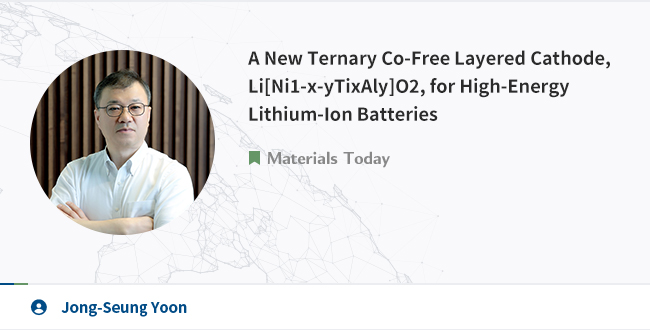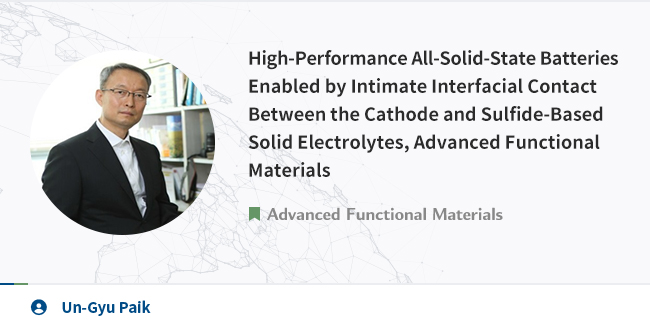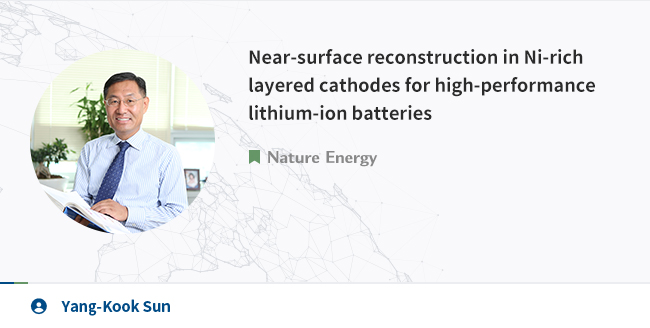The rapid expansion of the electric vehicle (EV) market has emphasized the importance of lithium-ion batteries (LIBs), as the performances and costs of EVs are significantly influenced by them. In a battery, the cathode is among the foremost components, as it predominantly determines the LIB’s performance and price.
Prime candidate cathode materials proposed for next-generation LIBs are Ni-rich Li[NixCoyAl1–x–y]O2 (NCA) and Li[NixCoyMn1–x–y]O2 (NCM). However, this high Ni content results in instabilities in the bulk and at the surface of the materials, undermining their durability and utility. The instability of the Ni-rich layered cathode materials in lithium-ion batteries is attributed to their labile surface reactivity.
|

|

|

|
|
For the sustainable development of Li[NixCoyMn1−x−y]O2 and Li[NixCoyAl1−x−y]O2 cathodes, reducing the reliance on cobalt, which is extremely expensive with a fluctuating price and supply uncertainty, is considered essential. In this study, we propose a highly stable Co-free Ni-rich layered cathode developed through a new doping strategy that incorporates heteroelements at different doping stages, including the introduction of Ti during Ni(OH)2 synthesis and doping excess amounts of Al during the lithiation step. The multi-stage engineering strategy guarantees structural durability and electrochemical cycling stability of the inherently unstable LNO to a commercially viable level.
|

|
 |
 |
|
Neoteric solvents, such as ionic liquids (ILs) and deep eutectic solvents (DESs), have recently gained attention due to their highly tunable properties that enable their application as green solvents in energy and heat storage. Here, combined molecular modeling and machine learning (ML) is used as a holistic tool to map the thermal conductivity space of both ILs and DESs to bring their use as green solvents into industrial reality. The ILs and DESs are modeled using two techniques, the σ-profiles obtained from the quantum chemical COSMO-RS method and the critical properties from the group contribution method, which allowed the ML algorithms to easily distinguish the neoteric green solvents based on their structural and thermodynamic properties.
|

|

|

|
















